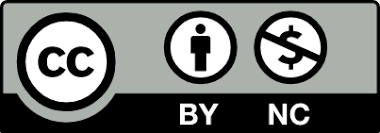شمارۀ جدید فصلنامه (پاییز1404) منتشر شد
Volume 13, Issue 2 (3-2023)
Social Problems of Iran 2023, 13(2): 239-260 |
Back to browse issues page
Download citation:
BibTeX | RIS | EndNote | Medlars | ProCite | Reference Manager | RefWorks
Send citation to:



BibTeX | RIS | EndNote | Medlars | ProCite | Reference Manager | RefWorks
Send citation to:
Karimi A, Ghaderi S, Hemmati B. (2023). Study of administrative corruption and its contexts in Tehran Municipality and presenting an exploratory model. Social Problems of Iran. 13(2), 239-260.
URL: http://jspi.khu.ac.ir/article-1-3548-en.html
URL: http://jspi.khu.ac.ir/article-1-3548-en.html
1- Assistant Professor, Department of Sociology, University of Kharazmi , alireza.karimi@khu.ac.ir
2- Associate Professor, Department of Sociology, University of Kharazmi
3- PhD in sociology and researcher
2- Associate Professor, Department of Sociology, University of Kharazmi
3- PhD in sociology and researcher
Abstract: (2086 Views)
Studying and understanding the causes, processes, indicators and consequences of administrative corruption and ways to deal with this phenomenon is an undeniable necessity for the administrative system. In municipalities, corruption is considered as one of the important issues of urban management. The purpose of this research is to find a model to explain the causes of administrative corruption in Tehran Municipality. Administrative corruption was studied with inductive approach and grounded theory method and semi-structured interview tool. In this regard, interviews were conducted with 30 managers and experts in the field of administrative corruption, and after performing open coding, central coding and selective coding, 12 main concepts and 44 areas of administrative corruption in Tehran municipality were identified. Finally, the paradigmatic model, the causal conditions, the intervening conditions and the underlying conditions of the occurrence of administrative corruption in Tehran Municipality were explained. The causes of corruption can be investigated at two levels, namely organizational structure and organizational environment and bureaucratic activism. The factors and axes identified that are the cause of the occurrence of administrative corruption in the municipality are all gathered around a more general concept that has created a suitable platform for the emergence of these areas, and that is the concept of "corrupt organizational structure". The "corrupt organizational structure" has finally caused the creation of a culture of corruption in Tehran Municipality, which results in the reproduction of corruption in the organizational context of Tehran Municipality.
Keywords: Administrative corruption, grounded theory, causes of corruption, corrupt organizational structure, Tehran Municipality.
Type of Article: Original Research |
Received: 2022/12/16 | Accepted: 2023/02/12 | Published: 2023/03/13
Received: 2022/12/16 | Accepted: 2023/02/12 | Published: 2023/03/13
References
1. استراوس، آنسلم و کربین، جولیت (1390). مبانی پژوهش کیفی؛ فنون و مراحل تولید نظریـهٔ زمینهای. ترجمه ابراهیم افشار، تهران: نی.
2. پرورام، رضا و مردانی، محمدرضا (1399). تأثیر سیستم اطلاعات مدیریت بر مقابله با فساد اداری (مورد مطالعه: شهرداری منطقۀ 21). منابع و سرمایۀ انسانی، دوره 1، شماره 1: ۹۱ - ۶۱.
3. حقیقتیان، منصور؛ دوله، معصومه؛ طعیمهپور، ایمان و دوله، فاطمه (1395). رابطه بین تعهد سازمانی و گرایش به فساد اداری بین کارکنان شهرداری تهران. فصلنامه رفاه اجتماعی، دوره 16، شماره ۶۱: ۷۶-۴۷.
4. فردوسیپور، امیره (1393). شناسایی منافذ فساد اداری در ایران (مورد مطالعه: شهرداری تهران). پایاننامه کارشناسی ارشد، دانشگاه تربیت مدرس، دانشکده مدیریت و اقتصاد.
5. دوگراف، خیالت؛ واخنار، پیتر و فون مارافیک، پتریک (1394). چشماندازهای نظری فساد. ترجمه هانیه هژیرالساداتی و دیگران، تهران: آگاه.
6. رابرتسون، یان (1374). درآمدی بر جامعه (با تأکید بر نظریههای کارکردگرایی، ستیز و کنش متقابل نمادین). ترجمه حسین بهروان، مشهد: آستان قدس رضوی.
7. رابینگتون، ارل و واینبرگ، مارتین (1382). رویکردهای نطری هفتگانه در بررسی مسائل اجتماعی. ترجمه رحمتالله صدیق سروستانی، تهران: دانشگاه تهران.
8. رفیعپور، فرامرز (1386). سرطان اجتماعی فساد. تهران: شرکت سهامیانتشار.
9. زاهدی، شمسالسادات؛ محمدنبی، سینا و شهبازی، مهدی (1395). بررسی عوامل مؤثر بر کاهش فساد اداری (مطالعه موردی در شهرداری تهران). فصلنامه مدیریت فرهنگ سازمانی، دوره 7، شماره 20: 55-29.
10. عابدیجعفری، حسن؛ طاهرپورکلانتری، حبیبالله؛ زرندی، سعید و آقازاده دهده، فتاح (1398). شناسایی عوامل فردی مؤثر بر تمایل به فساد اداری در شهرداری تهران. مجله مطالعات رفتار سازمانی، سال 8، شماره 1 (پیاپی 29): 49-74.
11. عباسزاده واقفی، شیرینالسادات؛ دلخواه، جلیل و فروزنده دهکردی، لطفالله (1396). شناسایی علل بومی بروز فساد اداری: مورد مطالعه شهرداری تهران. دانش حسابرسی، سال 17، شماره 68: 40-5.
12. کوزر، لوییس و روزنبرگ، برنارد (1385). نظریههای بنیادی جامعهشناسی. ترجمه فرهنگ ارشاد، تهران: نی.
13. فیضآبادی، حوریه و علائی، سعید (1397). تأثیر شفافیت سازمانی بر کاهش فساد اداری با تأثیرات متقابل اعتماد سازمانی در مراکز درمانی شهرداری تهران. فصلنامه مدیریت بهداشت و درمان، دوره 9، شماره 3: 53-47.
14. محمدی، مهدی؛ رفیعی، حسن؛ موسوی، میرطاهر و حسینزاده، سمانه (1395). ادراک فساد و احساس عدالت اجتماعی. مسائل اجتماعی ایران، سال 7، شماره 1: 144-125.
15. هانتینگتون، ساموئل (1382). سامان سیاسی در جوامع دستخوش دگرگونی. ترجمه محسن ثلاثی، تهران: علم.
16. Andersen, T.B., Bentzen, J., Dalgaard, C.J., & Selaya, P. (2011). Does the Internet reducecorruption? Evidence from US states and across countries. The World Bank Economic Review, 25(3), 387-417. [DOI:10.1093/wber/lhr025]
17. Beekman, G., Bulte, E., & Nillesen, E. (2014). Corruption, investments and contributions topublic goods: experimental evidence from rural Liberia. Journal of Public Economics, 115, 37-47. [DOI:10.1016/j.jpubeco.2014.04.004]
18. Brown, A. (1995). Organizational culture, London: Pitman pulishing, 14-21.
19. Dong, B., & Torgler, B. (2011). Democracy, property rights, income equality, and corruption. http://papers.ssrn.com/sol3/papers.cfm?abstract_id=1756816. [DOI:10.2139/ssrn.1756816]
20. Hirchi, T. (1969). Causes of Delinquency. Berkely, University of California Press, Journal of Review International the Criminology, 38(2), 139- 797.
21. Pellegrini, L., & Gerlagh, R. (2004). Corruption's effect on growth and its transmission channels. Kyklos, 57(3), 429-456. [DOI:10.1111/j.0023-5962.2004.00261.x]
22. Liu, X. (2016). Corruption culture and corporate misconduct. Journal of Financial Economics, 122(2), 307-327. [DOI:10.1016/j.jfineco.2016.06.005]
23. Rivas, M. F. (2012). An experiment on corruption and gender. Bulletin of Economic Research, 65(1), 10-42. [DOI:10.1111/j.1467-8586.2012.00450.x]
24. Seligson, M. A. (2006). The measurement and impact of corruption victimizat ion: survey evidence from Latin America. World Development, 34(2), 381-404. [DOI:10.1016/j.worlddev.2005.03.012]
25. Scott, J. C. (2002). Comparative Political corruption. New Jersey: Prentice Hall, Inc.
26. Montinola, G.R., & Jackman, R.W. (2002). Sources of corruption: a cross-country study. British Journal of Political Science, 32(1), 147-170. [DOI:10.1017/S0007123402000066]
27. Pellegrini, L., & Gerlagh, R. (2004). Corruption's effect on growth and its transmission channels. Kyklos, 57 (3), 429-456. [DOI:10.1111/j.0023-5962.2004.00261.x]
28. Tanzi, V. (2001). Corruption Around the Word: Causes, Consequences, Scope, and cures. IMF working paper.
29. Treisman, D. (2000). The causes of corruption: a cross-national study. Journal of Public Economics, 76(3), 399-457 [DOI:10.1016/S0047-2727(99)00092-4]
30. Treisman, D. (2020). Economic Development and Democracy: Predispositions and Triggers, Department of Political Science, University of California, Los Angeles, California 90095-1472. Journal of Economic Perspectivesthis link is disabled, 2019, 33(4), 100-127.
Send email to the article author
| Rights and permissions | |
 |
This work is licensed under a Creative Commons Attribution-NonCommercial 4.0 International License. |







